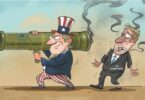Nargis Rahman
The call for celebrating the women’s day internationally is the 8th of March. This afternoon we celebrate it on the eve. For the celebration of being a woman cannot be restricted to a date, to a time, to a period. Being a woman is itself a celebration and it is not restricted to 50, 500 thousand successful women—it is for all Womanhood. It has been a long struggle for us to have a formal universal recognition. I must state that this struggle was, and is not, against men but against all the false retrogressive traditions and practices that have been institutionalized by exploitative antihumanity practioner.
Women’s day was initiated by German Marxist socialist groups in Europe led by Clara Zetkin 1908 and in North America 1909 by Theresa Malkiel to celebrate the cultural, political socio economic achievements of women along with a call for equal wages and equal opportunities.
In 1975 United Nation took over the call for the promotion of the rightful status of women and launched a new era in global efforts by opening a worldwide dialogue on gender equality and the elimination of gender discrimination; the integration and full participation of women in development; and an increased contribution by women towards strengthening world peace.
Every year the UN launches a theme for the protection and enhancement of the women’s status. The theme this year is “Gender Equality Today, for a Sustainable Tomorrow” which is recognizing and honoring the women and girls who are leading the charge for climate change, and contributing to a sustainable tomorrow. For some the popular slogan is Breaking the bias.
In Pakistan from the beginning of March to perhaps the end of the month many events are organized to celebrate the International Women’s Day. These are largely by the fortunate, the educated, the aware or the affluent strata. But an overwhelming numbers of our sisters remain unaware, uninformed of the Women’s Day and its goal, in the many ghettos of the cities and the large rural hinterland of Pakistan.
Pakistan for the last 16 years has been regressing in the global indices, and now languishes at the 153rd position amongst 156th countries in the 2021, WEF Gender Gap Report.
This ranking is contested by quite a few people in Pakistan on the basis of the achievements of women and their visible presence in almost every field. It is true that Pakistani women have made great strides in achieving excellence and honor, in the public sphere. They do not cling to the old traditional professional occupations of teaching or medicine but have achieved distinction as Scientist Nuclear Physicists, Oscar winning film makers, parliamentarians, Fighter Pilots, Entrepreneur, CEOs, Major Generals, Mountain Climbers, Writers, Artists, Engineers and Sports women. But the numbers are infinitesimal to the ratio of their population percentage which is 49%. The WEF uses four sub-indexes to measure the ranking of 156th countries in the various dimensions of gender parity, that include economic participation and opportunity, educational attainment, political empowerment, and health and survival. Pakistan ranked 153rd in health and survival, 152nd in economic participation and opportunity, 144th in educational attainment, and 98th in political empowerment indices, and was declared 153rd out of 156th countries!
The same report showed that Pakistan failed to improve its score on gender parity in the last sixteen years. These statistics show that overall progress in reducing the gender gap is Stagnant in Pakistan!
Perhaps a point of necessary comparison, is Bangladesh that has made remarkable progress in the last 20 years in improving the lives of women and girls. Maternal mortality rates are falling, fertility rate is declining, and there is greater gender parity in school enrolment. Bangladesh has ranked 65th (out of 156 countries) in the latest Global Gender Gap Index 2021 published by the World Economic Forum (WEF). Despite slipping 15 places from last year, Bangladesh has retained its position as the best performing South Asian country!
Between 2003 to 2016, Bangladesh increased the female labor participation rate by 10 percent to 36 percent, thanks to the readymade garments and livestock sectors
Despite increases in recent years, female labor force participation in Pakistan, remains at 25%, is well below rates for countries with similar income levels.
Even among women with high levels of education, labor force participation lags: only around 25% of women with a university degree in Pakistan are working.
Looking Pakistan’s ranking in the Global Human Development Index (GHDI), we find Pakistan at the 154th position out of 189th countries in the 17-10-2020 report.
It is a paradox that a country which is a world Nuclear Power has the 9th most powerful army in the world, has known ample natural human resources a valued youth bulge comprising of 48% girls, should be relegated to such a pathetic undignified rank in global indices!!!
The Global Gender Gap Index examines the gap between men and women across four fundamental categories (sub-indexes): Economic Participation and Opportunity, Educational Attainment, Health and Survival and Political Empowerment.
The Human Development Index (HDI) measures each country’s social and economic development by focusing on the following four factors: mean years of schooling, expected years of schooling, life expectancy at birth, and gross national income (GNI) per capita.
The affect of gender inequality in education, and employment, economic growth found through multiple linear regressions shows that if gender inequality is reduced there will be increase in GDP growth in Pakistan in the long run. Pakistan HDI is drastically lowered because of the known implementation of Women Development programs and projects.
Growth in Pakistan has been an unrealized promise; it has population growth but no true Development. If we hope to see Jinnah’s Pakistan realized we will have to work harder in improving and resourcing our very energetic resilient resourceful human capital honoring our commitments to International Charters, to the Sustainable Development Goals, strongly emphasize gender equity gender parity and women’s development in health, education, not survivals but progress skills using the latest technologies. Every Govt, every political party manifesto promises reform to bring the status of women according to the constitution of Pakistan. There is a plethora of unimplemented laws and uncompleted plans. The reality is observed in the Global Development Index Reports. Analysts state that institutional Decay, High levels of corruption, Pervasive Tribal Psche, trust deficit leading to public apathy, and tax evasion, and fulsome absence of the primary factor, the Rule of Law, are responsible for the degrading index of Human Development in Pakistan.
Resource your population, resource your women and you will ensure the future resourced generations of Pakistan.
Today we are very fortunate to have a highly reputed, competent panel to discuss how we can lift Pakistan from its present state of loss. The participating panelists are Ms. Akram Khatoon (Founder President First Women’s Bank), Justice R Sarmad Osmany (Former Judge The Supreme Court of Pakistan), Dr. Moonis Ahmer (Meritorious Professor & Dean Faculty of Social Sciences University of Karachi), Ms. Mahtab Rashdi (Former Member of the Provincial Assembly of Sindh), Prof. Dr. Shahin Haye (Consultant Psychiatrist, Former head of Department, Psychiatry The Aga Khan University Hospital). We look forward to their valued recommendations and sincerely hope that the powers that be will use them both as policy and implemented programs.
Aurat Zindabad
Pakistan Zindabad






